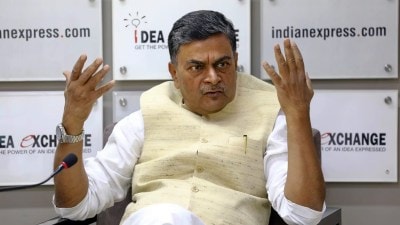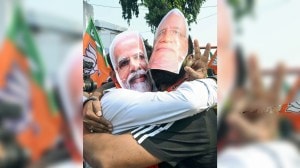Around 3.5 tonnes of gold, 18 crore cigarette sticks, 140 metric tonnes of red sanders and 90 tonnes of heroin were seized along with other drugs during the last financial year. Central Board of Indirect Taxes and Customs Chairman Sanjay Kumar Agarwal on Thursday (September 28) said the challenge of illicit trade looms larger than before and tackling issues such as counterfeiting, smuggling and tax evasion is fundamental to safeguarding India’s economic stability.
As per a report released by FICCI CASCADE on Thursday titled ‘Hidden Streams: Linkages Between Illicit Markets, Financial Flows, Organised Crime and Terrorism’, the illegal economy in India has an overall score of 6.3 in India, which is higher than the average score of 5 of other 122 countries. In the organised crime segment, India has a lower score of 4.3 against 5.2 for an average of 122 countries.

The report has inputs from multiple sources, including government data. It stated that although there are fewer criminal actors, they are widespread and engage in a variety of unlawful activities – such as drug and human trafficking and the illegal trade in wildlife products – mainly due to the efficacy of criminal networks in India. These networks have enabled them to generate substantial illicit financial flows, despite their small numbers.
We explain some of the key findings:
Story continues below this ad
Illicit Financial Flows – Value Gap India (2009-2018): India has faced an approximate total potential revenue loss of US $13 billion involving both misinvoiced imports and exports. The situation was worsened by a financial loss of $9 billion resulting from the practices of import misinvoicing. The uncollected value-added tax (VAT) amounted to a total of $3.4 billion.
The projected amount for customs charges is approximately $2 billion, while the anticipated sum for corporate income tax is forecast to be $3.6 billion. For the 2009-2018 period, the total aggregate value gap of misinvoicing was over $674.9 billion (as can be seen in Chart 1). In 2018, India had a value gap of US $84.9 billion. The value gaps as the percentage of the trade, however, declined marginally.
 Chart 1
Chart 1
Terror and Crime in India: Economic Impact of Violence for India (Billions PPP): Dealing with both terrorism and crime has gained significant attention due to the growing emphasis on security concerns and this has resulted in a considerable economic cost. In 2021, India’s economic cost for violence was at US $1170 billion at purchasing power parity (PPP) (Chart 2), which accounts for approximately 6% of the country’s GDP and violence per capita impact is estimated at US $841 at PPP.
 Chart 2
Chart 2
The report stated that nearly 80% of such containment costs relates to security and as the economy grows (along with it the illegal economy), India’s cost of addressing terror and crime will be significant.
Story continues below this ad
Organised Crime and Illegal Economy in India: Citing data from The Global Organised Crime Index (2021), the FICCI report said India’s benchmarking with 122 countries shows that the aggregate score of organised crime actors in India is low, at 4.3 (Chart 3(1)) on a scale of 1-10, compared to the average benchmark of 5.2 for 122 countries.
 Chart 3 (1)
Chart 3 (1)
The criminal network, however, has a significant influence in India with a score of 6, which is higher than the average score of 5.8 for 122 countries. This is due to criminal networks having a significant role in India’s organised crime scenario, with a widespread presence across the country involved in a variety of illicit activities including drug and human trafficking and the illegal trade in wildlife products.
On the other hand, the illegal economy in India has an overall score of 6.3 (Chart 3(2)), which is higher than the average score of 5 of 122 countries.
 Chart 3 (2)
Chart 3 (2)
“This suggests that although there are fewer criminal actors, they are widespread and engage in a variety of unlawful activities, including drug and human trafficking and the illegal trade in wildlife products. This apparent contradiction may be attributable to the efficacy of criminal networks in India, which enables them to generate substantial illicit financial flows despite their small numbers,” the report said.
Story continues below this ad
Drug Economy in India: India’s location near major drug-producing regions, including the Golden Triangle (Myanmar, Laos, and Thailand) and the Golden Crescent (Afghanistan, Pakistan, and Iran) has been associated with activities that may involve the transportation and distribution of controlled substances. There has been an increase in the illicit drug trade in India in recent years, with the Ficci report stating that 3,172 cases of drug seizures were recorded during 2014-2022 as against 1,257 cases in 2006-2013.
Total 4,888 arrests were made during the same period for these seizures involving 3.33 lakh kg of drugs worth Rs 20,000 crore (Chart 4(1)).
 Chart 4 (1)
Chart 4 (1)
Among the various kinds of drugs, Cannabis has a higher score of 7.5, compared to the benchmark average of 5.4, indicating its significant presence in India in comparison to other countries. The synthetic drug trade and the heroin trade both had scores of 6.5, which exceeded the benchmark averages of 5.3 and 4.6, respectively (Chart 4(2)).
 Chart 4 (2)
Chart 4 (2)



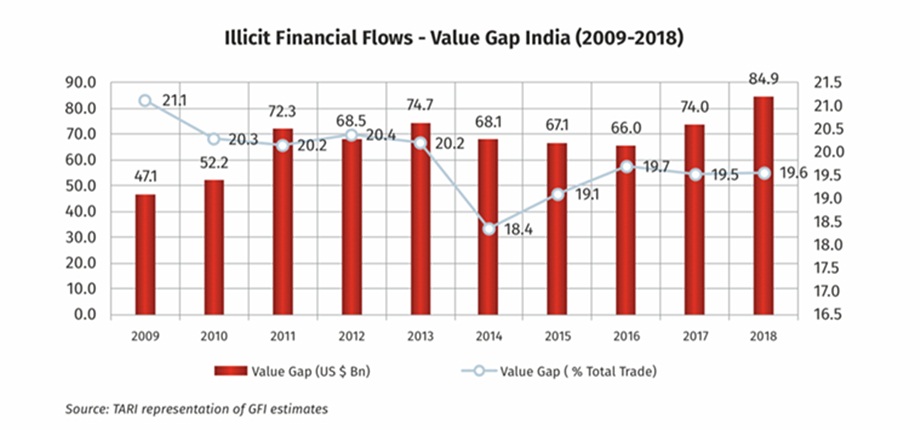 Chart 1
Chart 1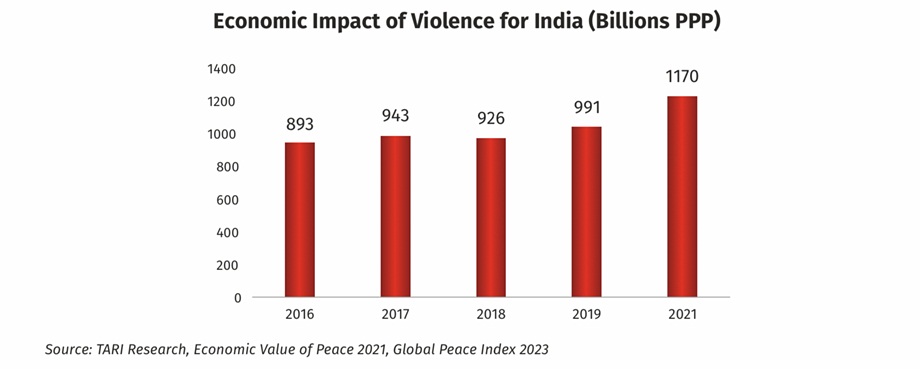 Chart 2
Chart 2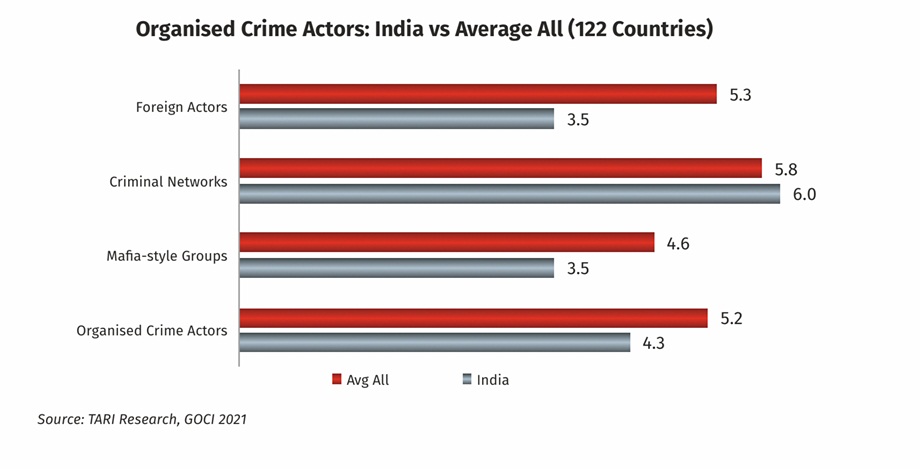 Chart 3 (1)
Chart 3 (1)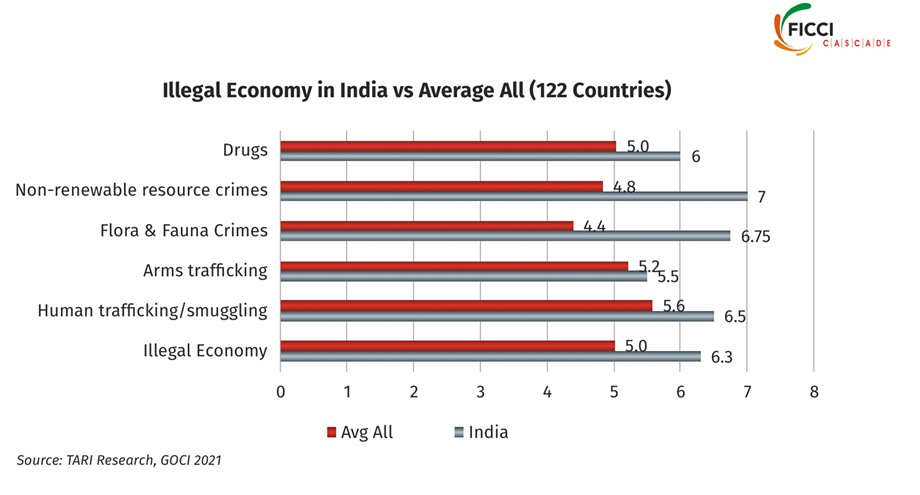 Chart 3 (2)
Chart 3 (2) Chart 4 (1)
Chart 4 (1)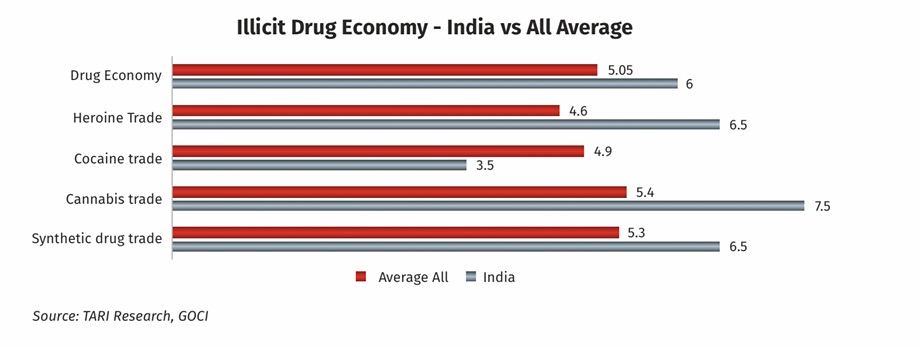 Chart 4 (2)
Chart 4 (2)
